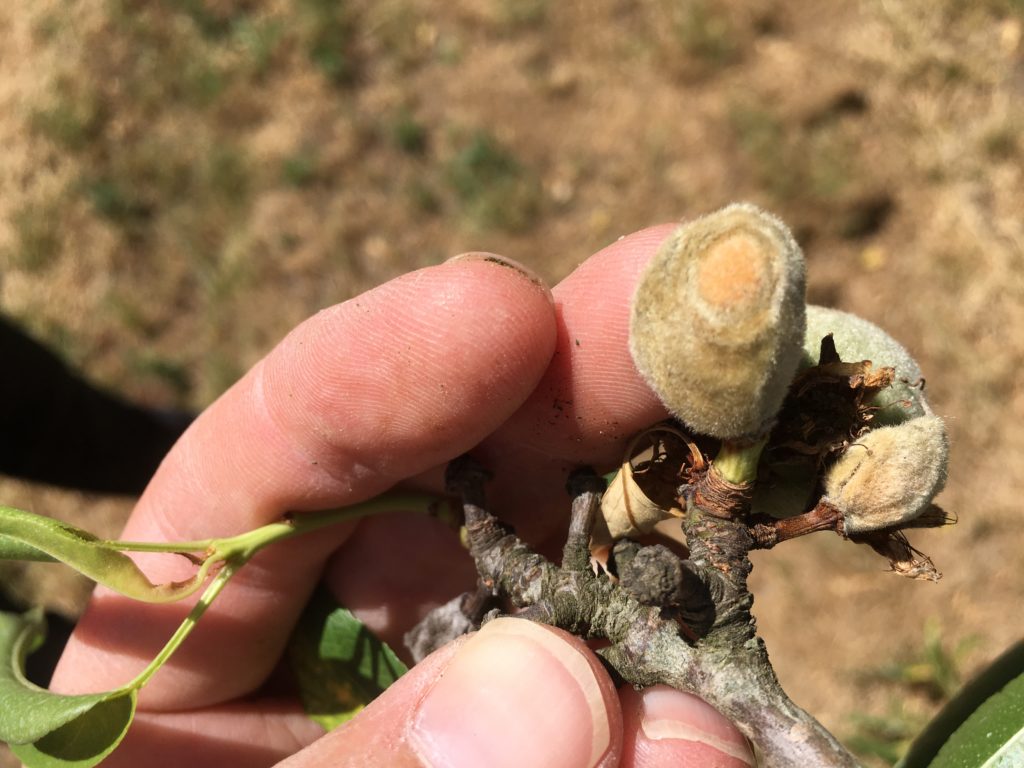Improper timing of fungicides wastes money and leads to crop loss from disease. Over the years, I have seen several disease epidemics that were due to the improper timing of a fungicide spray. These were observed in both wet and dry years, indicating the difficulty and general misunderstanding of disease and spray application timing.

Proper timing of fungicide applications is difficult. Operational constraints in applying fungicides leads to mis-timed (too early, too late) or poor applications (every other row, applying too fast). This is often a function of equipment availability, whether by grower/operation or custom applied spray. Add to this aspect the various layers of fungicide availability and delivery timing, the changing pathogens and disease conditions, as well as the general misconceptions of various diseases, it is very easy for problems to occur.
In order to control diseases, as advocated in earlier postings, it is best to design a fungicide plan prior to the start of the season. This provides the opportunity to review reference materials and determine which fungicides are best for differing stages of the crop. This plan also creates the opportunity to provide options for differing modes of actions at each timing to help with pricing, and reduces the burden of having to put the plan together when the season has started (and there are several other demands). Personally, I like to design the plan for a wet year and remove fungicide timings if dry conditions occur. An example of a plan with different modes of actions can be found here.
Diseases don’t just occur. They require a susceptible host, the presence of a pathogen and suitable environmental conditions. For most almond foliar or bloom diseases, the pathogen is throughout the environment and most of our varieties are susceptible to one disease or another. The largest variable on a year-to-year basis is the environmental condition, and favorable conditions for diseases tend to be periods of leaf wetness. Sprays should be timed to provide protection for susceptible plant tissues when multi-day rain events or multiple rain events within a short period of time occur.
Ideally, fungicides should be applied prior to a rain event. Fungicides provide protection for 10-14 days, depending on the amount and frequency of rain and changing crop stage. Re-applications after this period should occur if wet or foggy conditions persist. Applications may not be needed for passing storms, but multiple days of passing storms would warrant treatment. Generally, applications take about 30 minutes to become rainfast.
There is a lot of emphasis placed on the “reach-back potential” of modern fungicides. This is the ability to kill an infection that has already occurred and is due to the ability for these chemistries to move into the laminar layer of the leaf. Chemistries include the FRAC classes of 3, 7 and 11 (and others). It is thought that this would provide an extended period of protection for 1-3 days post infection. This provides the opportunity to continue a spray application after a rain event if it wasn’t completed prior to the storm. Applications made 3 days or later after an infection event will result in poor control of the targeted disease.
Fungicide rotation is important to prevent resistance among the various diseases. This process of utilizing different FRAC groups in successive applications will help keep the fungicide chemistry effective longer, leading to lower cost products and more fungicide options. Keep in mind that different trade names may not be different modes of action. Avoid applying the same FRAC number back-to-back even if the product contains multiple fungicide classes.
Rainy or wet years can be challenging when managing bloom and springtime diseases. Proper timing and coverage of the trees with an effective fungicide will reduce but not eliminate disease. Be prepared to make multiple applications if wet conditions persist and apply the materials prior to the rain event when possible.


Rodney
March 6, 2019Thanks David for the helpful info- It has been a “challenging ” bloom. We also seem to have major outbreak of BLAST in N. Merced county.
Hope all is well in Portugal-?
Obrigado
Rodney
David Doll
March 6, 2019Thanks for the update, Rodney. I am sorry to hear that. I was worried about that as we had warm then rainy conditions with that cold snap a few weeks ago.
Any varieties looks worse than others? In the past, Independence seemed to get hammered by Blast.
David
Paul Vermeulen
March 6, 2019Thank you for the pertinent information! I always refer to your current and previous articles when I have questions.
In regard to “favorable conditions” earlier during bloom maybe 10% bloom. We were advised to spray for brown rot, though the 10 day forecast didn’t call for temps any higher than 55. I looked up brown rot and it likes temps in the mid 70’s. Because of that information we decided to hold off and not apply the fungicide until conditions were more favorable for the pathogens we are trying to protect against.
Any thoughts? Is that a good decision process or are there things you would change/caution against?
David Doll
March 7, 2019Paul,
Good call and good point! I didnt even include temperature. Cold conditions (less than 55F) do not favor disease – especially brown rot. Holding off on the spray made sense in this situation.
I would consider spraying if the mid-day temperatures were above 60F and wet conditions are present.
David
What is a FRAC group? - The Almond Doctor
February 6, 2021[…] tools for future use. To increase the life of fungicides, we need to plan our fungicide program, spray only when conditions are conducive for disease, and avoid spraying when pathogen populations are too high. Remember, it takes years, if not […]